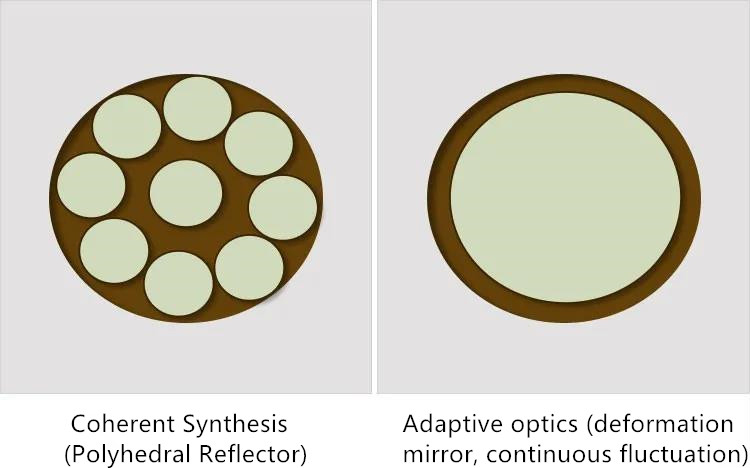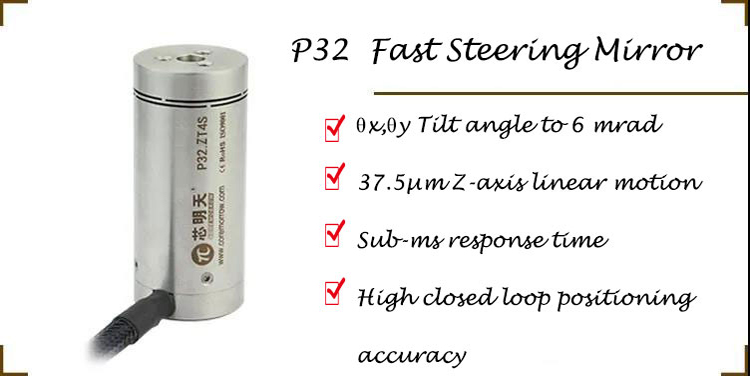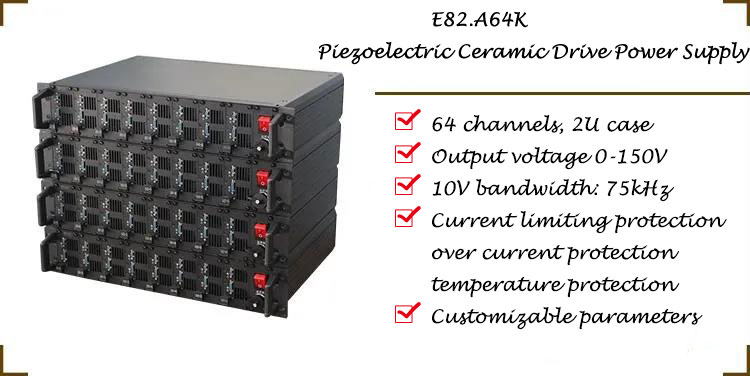
The Application of PZT & Piezo Tilt Mirrors in Light Field Control
Update time:2021-11-08 09:29:39Clicks:1553second
The ray represents the straight line of the propagation path and direction of the light. From science perspective, the ray is described by a five-dimensional plenoptic function: each ray is defined by three coordinates and two angles in 3D space to specify the direction that they are in 3D space.
Two Kinds of Light Field Control: Coherent Synthesis and Adaptive Optics

01
Coherent Combining-Light Field Control
Coherent combination is to divide the beam into multiple sub-aperture beams and then perform coherent combination. However, in the process of light transmission, due to various reasons, such as thermal effects and other factors, the phase and direction of the light will change. The simplest, direct and quick way to solve this problem is to use a piezo tilt mirror, and control the tilt angle of the piezo tilt mirror by adding a piezo control signal to control the piezo tilt mirror.
The coordinated use of multiple piezo tilt mirrors increases the surface shape of the reflector, thereby increasing the light intensity.
The inner part of CoreMorrow P32 fast steering mirror (piezo tilting mirror) is driven by three PZT piezo ceramics, which can produce high-speed millisecond-level Z-direction piston movement and θX, θY tilting movements.
02
Adaptive Optics-Light Field Control
The more commonly used deformable mirrors in adaptive optics are generally piezo deformable mirrors, which are driven by piezo ceramic arrays. Among them, piezo ceramic arrays are divided into multilayer piezo ceramic arrays and single-layer piezo ceramic arrays. The most significant differences between the two driving methods are the driving voltage, output displacement and external dimensions.
The piezo deformable mirrors in different system structures have different requirements for the size and displacement of the piezo ceramic array, and the selected piezo ceramics have different parameters.
CoreMorrow has a variety of piezo ceramics, the external size can be as small as 1.22×1.3×1.7mm3.
To meet the needs of piezo deformable mirror drive power supply, CoreMorrow has developed and designed a variety of piezo drive power supplies, with the number of channels up to several hundred channels. E82.A64K series piezo ceramic drive power is one of them.
- Previous article:E81.A1K-I1 Series Kilowatt Piezo Power Amplifier!
- Next article:Piezo Stick-Slip Drive Principle & Application in Piezo Motor Platform
Sweep, get the latest information on core tomorrow
Address:1F, Building I2, No.191 Xuefu Road, Nangang District, Harbin, China
Tel:0451-86268790
Copyright@ CoreMorrow Ltd. 黑ICP备16009173号-1





